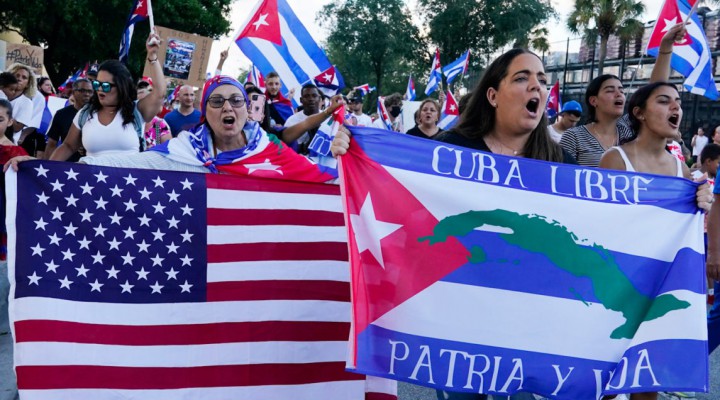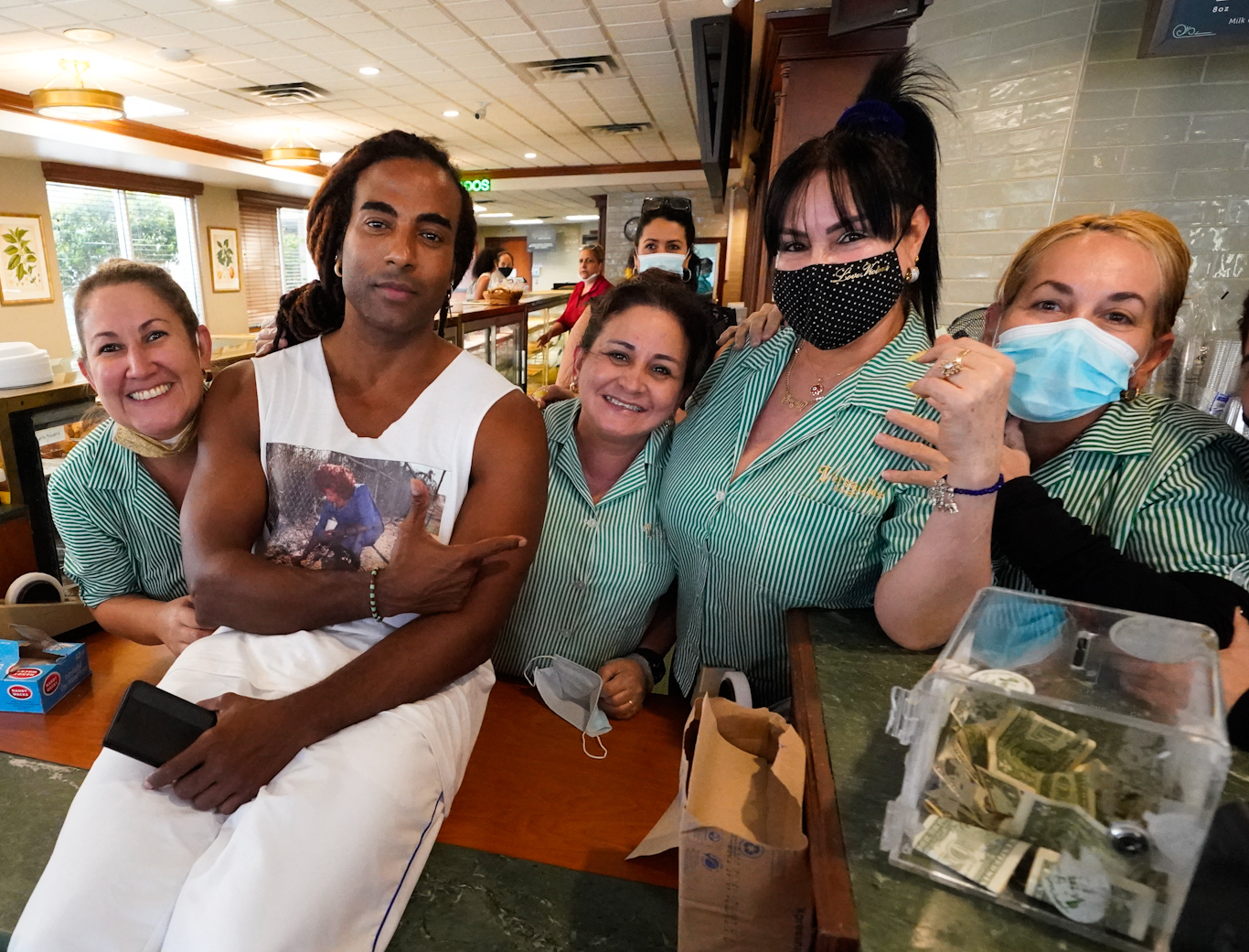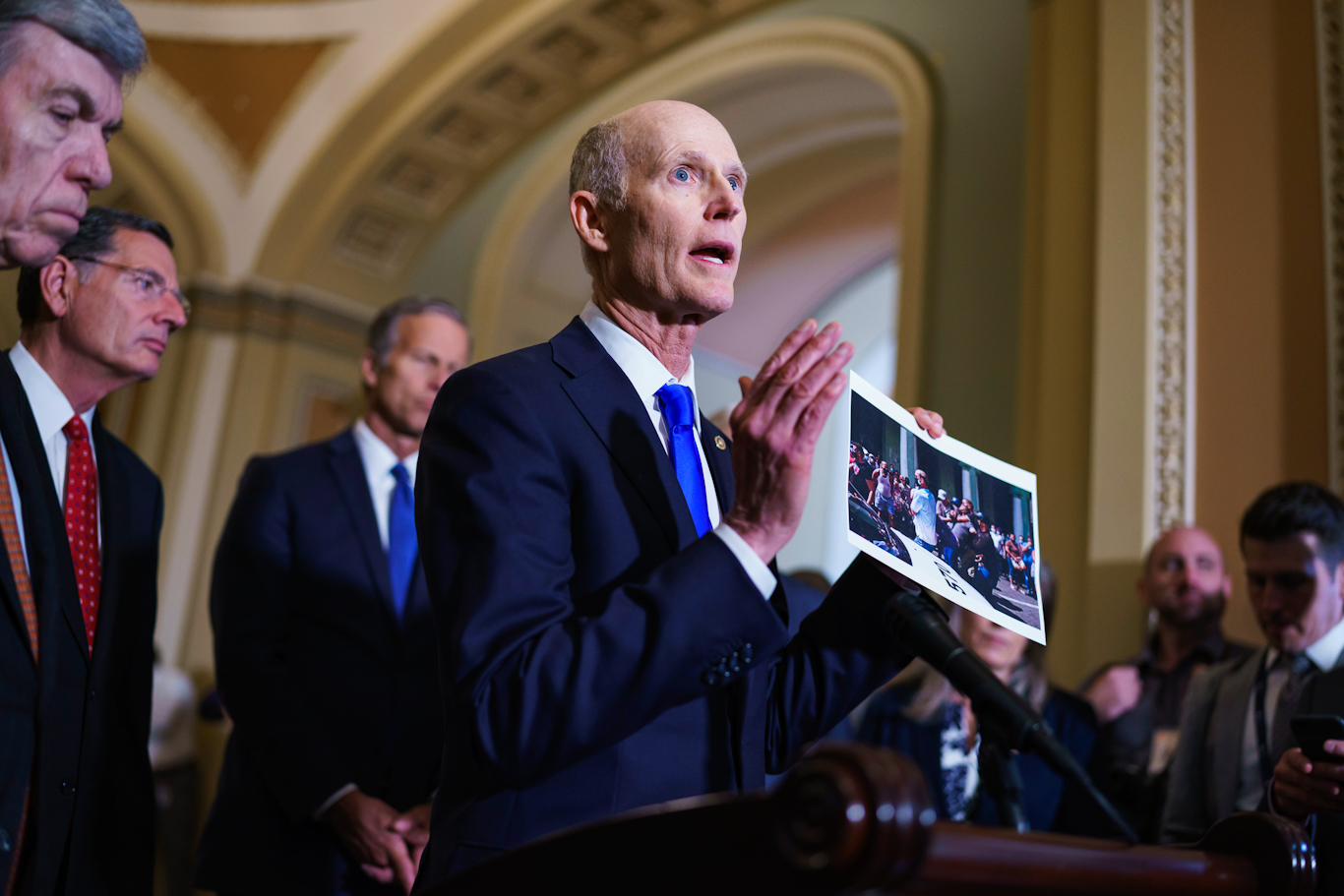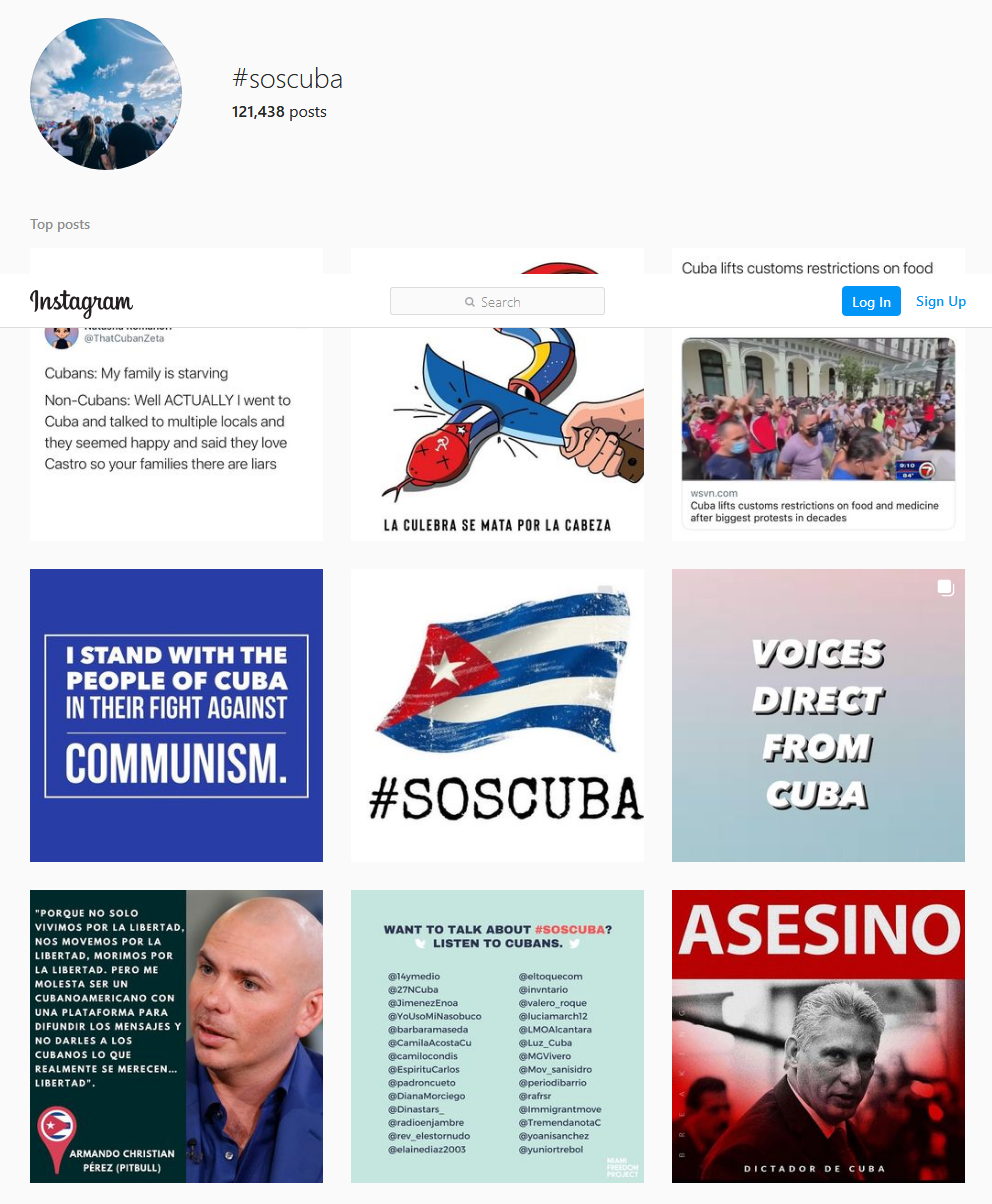The Bay of Tweets: Documents Point to US Hand in Cuba Protests

The U.S. government can cause economic misery for the Cuban people, but it cannot, it appears, convince them to overthrow their government.
MPN- Cuba was rocked by a series of anti-government street protests earlier this week. The U.S. establishment immediately hailed the events, putting its full weight behind the protestors. Yet documents suggest that Washington might be more involved in the events than it cares to publicly divulge.
As many have reported, the protests, which started on Sunday in the town of San Antonio de los Baños in the west of the island, were led and vocally supported by artists and musicians, particularly from its vibrant hip-hop scene.
“For those new to the issue of Cuba, the protests we are witnessing were started by artists, not politicians. This song ‘Patria y Vida’ powerfully explains how young Cubans feel. And its release was so impactful, you will go to jail if caught playing it in Cuba,” said Florida Senator Marco Rubio, referencing a track by rapper Yotuel.
Both NPR and The New York Times published in-depth features about the song and how it was galvanizing the movement. “The Hip-Hop Song That’s Driving Cuba’s Unprecedented Protests,” ran NPR’s headline. Yotuel himself led a sympathy demonstration in Miami.
But what these accounts did not mention was the remarkable extent to which Cuban rappers like Yotuel have been recruited by the American government in order to sow discontent in the Caribbean nation. The latest grant publications of the National Endowment for Democracy (NED) — an organization established by the Reagan administration as a front group for the CIA — show that Washington is trying to infiltrate the Cuban arts scene in order to bring about regime change. “A lot of what we do today was done covertly 25 years ago by the CIA,” NED co-founder Allen Weinstein once told The Washington Post.

Yotuel poses with workers, July 14, 2021, at at a Cuban restaurant in Miami’s Little Havana neighborhood. Wilfredo Lee | AP
For instance, one project, entitled “Empowering Cuban Hip-Hop Artists as Leaders in Society,” states that its goal is to “promote citizen participation and social change,” and to “raise awareness about the role hip-hop artists have in strengthening democracy in the region.” Another, called “Promoting Freedom of Expression in Cuba through the Arts,” claims it is helping local artists on projects related to “democracy, human rights, and historical memory,” and to help “increase awareness about the Cuban reality.” This “reality,” as President Joe Biden himself stated this week, is that the Cuban government is an “authoritarian regime” that has meted out “decades of repression” while leaders only “enrich themselves.”
Other operations the NED is currently funding include enhancing Cuban civil society’s ability to “propose political alternatives” and to “transition to democracy.” The agency never divulges with whom it works inside Cuba, nor any more information beyond a couple of anodyne blurbs, leaving Cubans to wonder whether any group even vaguely challenging political or societal norms is secretly bankrolled by Washington.
“The State Department, the U.S. Agency for International Development, and the U.S. Agency for Global Media have all financed programs to support Cuban artists, journalists, bloggers and musicians,” Tracey Eaton, a journalist who runs The Cuba Money Project, told MintPress. “It’s impossible to say how many U.S. tax dollars have gone toward these programs over the years because details of many projects are kept secret,” he added.
A currently active grant offer from the NED’s sister organization, USAID, is offering $2 million worth of funding to groups that use culture to bring about social change in Cuba. Applicants have until July 30 to ask for up to $1 million each. The announcement itself references Yotuel’s song, noting, “Artists and musicians have taken to the streets to protest government repression, producing anthems such as ‘Patria y Vida,’ which has not only brought greater global awareness to the plight of the Cuban people but also served as a rallying cry for change on the island.”
The hip-hop scene in particular has long been a target for American agencies like the NED and USAID. Gaining popularity in the late 1990s, local rappers had a considerable impact on society, helping bring to the fore many previously under-discussed topics. The U.S. saw their biting critiques of racism as a wedge they could exploit, and attempted to recruit them into their ranks, although it is far from clear how far they got in this endeavor, as few in the rap community wanted to be part of such an operation.
MintPress also spoke with Professor Sujatha Fernandes, a sociologist at the University of Sydney and an expert in Cuban music culture. Fernandes stated:
For many years, under the banner of regime change, organizations like USAID have tried to infiltrate Cuban rap groups and fund covert operations to provoke youth protests. These programs have involved a frightening level of manipulation of Cuban artists, have put Cubans at risk, and threatened a closure of the critical spaces of artistic dialogue many worked hard to build.”
Other areas in which U.S. organizations are focussing resources include sports journalism — which the NED hopes to use as a “vehicle to narrate the political, social, and cultural realities of Cuban society” — and gender and LGBTQ+ groups, the intersectional empire apparently seeing an opportunity to also use these issues to increase fissures in Cuban society.
The House Appropriations Budget, published earlier this month, also sets aside up to $20 million for “democracy programs” in Cuba, including those that support “free enterprise and private business organizations.” What is meant by “democracy” is made clear in the document, which states in no uncertain terms that “none of the funds made available under such paragraph may be used for assistance for the government of Cuba.” Thus, any mention of “democracy” in Cuba is all but synonymous with regime change.
Capitalizing on a battered economy
The protests began on Sunday after a power outage left residents in San Antonio de los Baños without electricity during the summer heat. That appeared to be the spark that led to hundreds of people marching in the street. However, Cuba’s economy has also taken a nosedive of late. As Professor Aviva Chomsky of Salem State University, author of “A History of the Cuban Revolution,” told MintPress:
Cuba’s current economic situation is pretty dire (as is, I should point out, almost all of the Third World’s). The U.S. embargo (or, as Cubans call it, blockade) has been yet another obstacle (on top of the obstacles faced by all poor countries) in Cuba’s fight against COVID-19. The collapse of tourism has been devastating to Cuba’s economy — again, as it has been in pretty much all tourism-heavy places.”
However, Chomsky also noted that it could be a mistake to label all the protestors as yearning for free-market shock therapy. “It’s interesting to note that many of the protesters are actually protesting Cuba’s capitalist reforms, rather than socialism. ‘They have money to build hotels but we have no money for food, we are starving,’ said one protester. That’s capitalism in a nutshell!” Chomsky said.

Florida Sen. Rick Scott holds a photo of Cuban protesters during a press conference in DC, July 13, 2021. J. Scott Applewhite | AP
Eaton was skeptical of the idea that all those marching were in the pay of the U.S. “Certainly, much of the uprising was organic, driven by Cubans who are desperate, poor, hungry and fed up with their government’s inability to meet their basic needs,” he said. Yet there were signs that at least some were not simply making a point about the lack of food in stores or medicines in pharmacies. A number of demonstrators marched underneath the American flag and the events were immediately endorsed by the U.S. government.
“We stand with the Cuban people and their clarion call for freedom,” read an official statement from the White House. Julie Chung, Biden’s Acting Assistant Secretary for U.S. Department of State’s Bureau of Western Hemisphere Affairs, added:
Cuba’s people continue to bravely express yearning for freedom in the face of repression. We call on Cuba’s government to: refrain from violence, listen to their citizens’ demands, respect protestor and journalist rights. The Cuban people have waited long enough for ¡Libertad!”
Republicans went much further. Mayor of Miami Francis Suarez demanded that the United States intervene militarily, telling Fox News that the U.S. should put together a “coalition of potential military action in Cuba.” Meanwhile, Florida Congressman Anthony Sabbatini called for regime change on the island, tweeting:
High-ranking communist officials in Cuba should be given an ultimatum now:
Either immediately assist in the transition of government away from communism or be prosecuted and executed thereafter #SOSCuba
— Anthony Sabatini (@AnthonySabatini) July 12, 2021
The corporate media cheering section
Corporate media were also extremely interested in the protests, devoting a great deal of column inches and air time to the demonstrations. This is extremely unusual for such actions in Latin America. Colombia has been living through months of general strikes against a repressive government, while there have been three years of near-daily protests in Haiti that were almost completely ignored until earlier this month, when U.S.-backed President Jovenel Moïse was assassinated.
The effect of U.S. sanctions was constantly downplayed or not even mentioned in reporting. For example, The Washington Post’s editorial board came out in favor of the protestors, claiming Cuban President Miguel Díaz-Canel was reacting “with predictable thuggishness…blaming everything on the United States and the U.S. trade embargo.” Other outlets did not even mention the embargo, leaving readers with the impression that the events could only be understood as a democratic uprising against a decaying dictatorship.
This is particularly pernicious because government documents explicitly state that the goal of the U.S. sanctions is to “decrease monetary and real wages, to bring about hunger, desperation and [the] overthrow of [the] government” — exactly the conditions brewing in Cuba right now. Professor Chomsky noted:
The U.S. embargo/blockade is one (not the only) cause of Cuba’s economic crisis. The U.S. has overtly and continuously said that the goal of the embargo is to destroy Cuba’s economy so that the government will collapse. So it’s not just reasonable, it’s obvious that the U.S. has some kind of hand in this.”
Chomsky also took issue with the media’s explanation of events, stating:
Look at coverage of Black Lives Matter or Occupy Wall Street protests in this country. One thing that we see consistently is that when people protest in capitalist countries, the media never explains the problems they are protesting as caused by capitalism. When people protest in communist or socialist countries, the media attributes the problems to communism or socialism.”
Media were at pains to emphasize how large and widespread the anti-government demonstrations were, insisting that the pro-government counter-demonstrations were smaller in number, despite images from the protests suggesting that the opposite might be true. As Reuters reported, “Thousands took to the streets in various parts of Havana on Sunday including the historic centre, drowning out groups of government supporters waving the Cuban flag and chanting Fidel.”
If this were the case, it is odd indeed that so many outlets used images of pro-government movements to illustrate the supposed size and scope of the anti-government action. The Guardian, Fox News, The Financial Times, NBC and Yahoo! News all falsely claimed a picture of a large socialist gathering was, in fact, an anti-government demo. The large red and black banners emblazoned with the words “26 Julio” (the name of Fidel Castro’s political party) should have been a dead giveaway to any editors or fact checkers. Meanwhile, CNN and National Geographic illustrated articles on the protests in Cuba with images of gatherings in Miami — gatherings that looked far better attended than any similar ones 90 miles to the south.
A ton of corporate media, including the Financial Times, Fox News, The New York Times and The Guardian have used a pic of a PRO-govt rally in Cuba
to illustrate their articles on anti-government protests, falsely claiming the huge crowds to be on the side of the US. pic.twitter.com/eKo9QJzzeP
— Alan MacLeod (@AlanRMacLeod) July 13, 2021
Social media meltdown
Social media also played a pivotal role in turning what was a localized protest into a nationwide event. NBC’s Director of Latin America, Mary Murray, noted that it was only when live streams of the events were picked up and signal-boosted by the expat community in Miami that it “started to catch fire,” something that suggests the growth of the movement was partially artificial. After the government blocked the internet, the protests died down.
The hashtag #SOSCuba trended for over a day. There are currently over 120,000 photos on Instagram using the hashtag. But as Arnold August, the writer of a host of books on Cuba and Cuban-American relations, told MintPress, much of the attention the protests was getting was the result of inauthentic activity:
The latest attempt of regime change also has its roots in Spain. Historically, the former colonizer of Cuba plays its role in all major attempts of regime change, not only for Cuba, but also, for example, in Venezuela. The July operation made intensive use of robots, algorithms and accounts recently created for the occasion.”

Within days the #SOSCUBA hashtag generated over 120,000 images on Instagram
August noted that the first account using #SOSCuba on Twitter was actually located in Spain. This account posted nearly 1,300 tweets on July 11. The hashtag was also buoyed by hundreds of accounts tweeting the exact same phrases in Spanish, replete with the same small typos. One common message read (translated from Spanish), “Cuba is going through the greatest humanitarian crisis since the start of the pandemic. Anyone who posts the hashtag #SOSCuba would help us a lot. Everyone who sees this should help with the hashtag.” Another text, reading “We Cubans don’t want the end of the embargo if that means the regime and dictatorship stays, we want them gone, no more communism,” was so overused that it became a meme in itself, with social media users parodying it, posting the text alongside pictures of demonstrations beside the Eiffel Tower, crowds at Disneyland, or pictures of Trump’s inauguration. Spanish journalist Julian Macías Tovar also cataloged the suspicious number of brand new accounts using the hashtag.
Much of the operation was so crude that it could not have failed to be discovered, and many of the accounts, including the first user of the #SOSCuba hashtag, have now been suspended for inauthentic behavior. Yet Twitter itself still chose to put the protests at the top of its “What’s Happening” for over 24 hours, meaning that every user would be notified, a decision that further amplified the astroturfed movement.
Twitter leadership has long displayed open hostility towards the Cuban government. In 2019, it took coordinated action to suspend virtually every Cuban state media account, as well as those belonging to the Communist Party. This was part of a wider trend of deleting or banning accounts favorable to governments the U.S. State Department considers enemies, including Venezuela, China and Russia.
In case you're wondering why Cuba is trending worldwide…pic.twitter.com/pzYae6DNS1
— Alan MacLeod (@AlanRMacLeod) July 12, 2021
In 2010, USAID secretly created a Cuban social media app called Zunzuneo, often described as Cuba’s Twitter. At its peak, it had 40,000 Cuban users — a very large number for that time on the famously Internet-sparse island. None of these users were aware that the app had been secretly designed and marketed to them by the U.S. government. The point was to create a great service that would slowly start to feed Cubans regime-change propaganda and direct them to protests and “smart mobs” aimed at triggering a color-style revolution.
In an effort to hide its ownership of the project, the U.S. government held a secret meeting with Twitter founder Jack Dorsey, aimed at getting him to invest in the project. It is unclear to what extent, if any, Dorsey helped, as he has declined to speak on the matter. This is not the only anti-government app the U.S. has funded in Cuba. Yet, considering both what happened this week and the increasingly close ties between Silicon Valley and the National Security State, it is possible the U.S. government considers further cloak-and-dagger apps unnecessary: Twitter already acts as an instrument for regime change.
Cuba in perennial crosshairs
By the end of the nineteenth century, the United States had effectively conquered its entire contiguous landmass; the frontier was declared closed in 1890. Almost immediately, it began to look for opportunities to expand westwards into the Pacific — to Hawaii, the Philippines and Guam. It also began looking southwards. In 1898, the U.S. intervened in the Cuban Independence War against Spain, using the mysterious sinking of the U.S.S. Maine as a pretext to invade and occupy Cuba. The U.S. operated Cuba as a client state for decades, until the Batista regime was overthrown in the 1959 revolution that brought Fidel Castro to power.
The U.S. launched a botched invasion of the island in 1961, the Bay of Pigs event driving Castro closer to the Soviet Union, laying the groundwork for the Cuban Missile Crisis the following year. The U.S. reportedly attempted to kill Castro hundreds of times, all without any luck. It did, however, carry out a bitter and protracted terroristic war against Cuba and its infrastructure, including using biological weapons against the island. Along with this came a long-standing economic war, the 60-year U.S. blockade of the island that throttled its development. In addition to this, it has attempted to bombard the Caribbean nation with anti-communist propaganda. TV Martí, a Florida-based media network, has cost the U.S. taxpayer well over half a billion dollars since its creation in 1990, despite the fact that the Cuban government successfully jams the signal, meaning virtually nobody watches its content.
After the dissolution of the Soviet Union in 1991, Cuba was left without its main trading partner, to which it had geared its economy. Without a guaranteed buyer for its sugar, and without subsidized Russian oil imports, the economy crashed. Sensing blood, the U.S. intensified the sanctions. Yet Cuba pulled through the grim time collectively known as the “Special Period.”
After a wave of left-wing, anti-imperialist governments came to power across Latin America in the 2000s, the Obama administration was forced to move towards normalizing diplomatic relations with the island. However, once in office, President Donald Trump reversed these actions, intensifying the blockade and halting vital remittances from Cuban-Americans to the island. Trump advisor John Bolton labeled Cuba, Venezuela and Nicaragua a “troika of tyranny” — a clear reference to George Bush’s “Axis of Evil” speech, implying that these three nations could expect military action against them soon. In its last days, the Trump administration also declared Cuba a state sponsor of terrorism.
While Biden had intimated that he might turn the U.S. Cuba policy back to the Obama days, he has, so far, done little to move away from the Trump line, his unequivocal endorsement of this week’s actions the latest example of this.
Despite monumental worldwide media coverage, encouragement and legitimation from world leaders, including the president of the United States himself, the recent action petered out after barely 24 hours. In most cases, counter-protests effectively diluted the protests, without the need for repressive forces to be deployed.
The U.S. government can cause economic misery for the Cuban people, but it cannot, it appears, convince them to overthrow their government. “The current events in Cuba constitute in reality the U.S.S. Maine of 2021,” August said. If this really was an attempted color revolution, as August is implying, it was not a very successful one, amounting to little more than a Bay of Tweets.
https://www.mintpressnews.com/documents-point-to-us-hand-in-cuba-protests/277987/
Feature photo | Floridians from Cuba’s ex-pat community in Hialeah, Fla., shout during a protest against the Cuban government, July 15, 2021. Marta Lavandier | AP
 TheAltWorld
TheAltWorld 
0 thoughts on “The Bay of Tweets: Documents Point to US Hand in Cuba Protests”